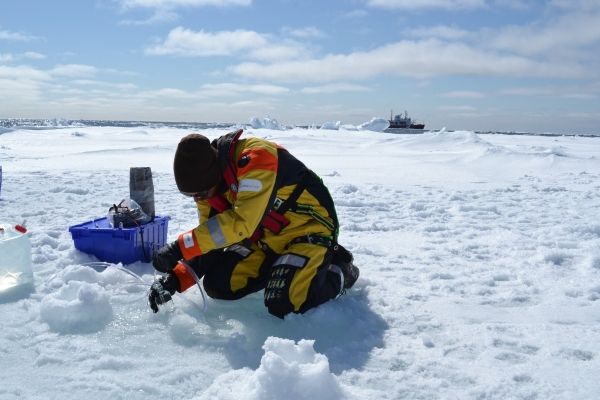Graduate student David Capelle has returned form a fruitful time in the field working with his advisor Tim Papakyriakou. He files this report on his research investigating carbon cycles in Hudson Bay.
Our research aims to improve our understanding on the Hudson Bay carbon cycle during spring, and the fate of terrestrial carbon that reaches Hudson Bay. Much like the Arctic Ocean, Hudson Bay is surrounded by rivers which deliver freshwater loaded with terrestrial organic matter from plants and animal waste. The fate of this carbon upon entering Hudson Bay has implications for both greenhouse gas cycling and ocean acidification.
If the terrestrial carbon is buried, it helps mitigate ocean acidification and allows the bay to take up CO2 from the atmosphere. However, if the terrestrial carbon is ‘remineralized’, it releases CO2 to the water, contributing to ocean acidification and potentially even emitting CO2 to the atmosphere.
Some research has already been done on the Hudson Bay carbon cycle. We know that the amount and type of carbon delivered by rivers varies on spatial and seasonal scales. Sediment cores show that only a small fraction of the total amount of the terrestrial carbon delivered to the bay is buried each year. Dissolved terrestrial organic carbon is abundant in Hudson Bay, but is rapidly remineralized by microbes and light.
Continue reading at University of Manitoba.
Image via University of Manitoba.


